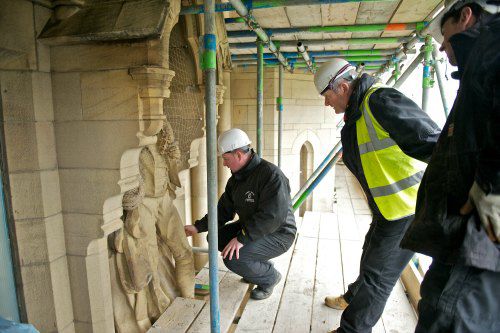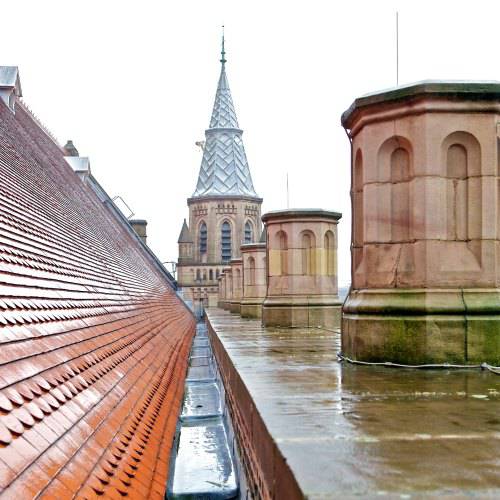Caring for our buildings
We’re committed to the care of our historic and listed buildings to ensure they can continue to be enjoyed by future generations.
The University has over 30 listed buildings. We take our responsibility for the historic built environment very seriously and have a continual programme of conservation and restoration.
Across the University

Conserving our historic built environment to the highest standards takes a lot of work. Here are some examples of our recent conservation work:
- The grade II-listed Sackville Street Building, built between 1895 and 1912, has undergone significant repairs to its external terracotta, decoration and windows.
- The grade II-listed Whitworth Art Gallery, constructed between 1895 and 1900, has been undergoing extensive refurbishment. As part of the £15 million works, the 19th century building will be connected with Whitworth Park through an elegant contemporary extension.
- Annual painting of the Lovell Telescope at Jodrell Bank. The full redecoration process takes eight years.
The Old Quadrangle

A major conservation project began in 2010 to restore the grade II and II* buildings surrounding the Old Quadrangle on the Oxford Road campus.
Running until 2016 at the cost of £11.3 million, extensive restoration has already been performed on the John Owens, Beyer and Christie buildings, as well as Whitworth Hall. Built between 1873 and 1902, the buildings were in need of repair to some external features in order to conserve their form and function.
The conservation work has already included:
- stonework restoration;
- stained glass windows releaded and refurbished;
- roof repairs;
- restoration of the Whitworth Hall organ;
- restoration of the John Owens central tower so that the original oak can be viewed;
- restoration and repair of the clock face on the John Owens Building.

The Old Quadrangle restoration not only allows us to conserve our past but also to prepare for the future. To future-proof the buildings, gutters and rainwater pipes have been increased in size where possible in consideration of climate changes.
Also, by replacing the John Owens Building’s windows with energy-efficient glazing, we’ve cut the amount of energy used to heat the building by 25%.
